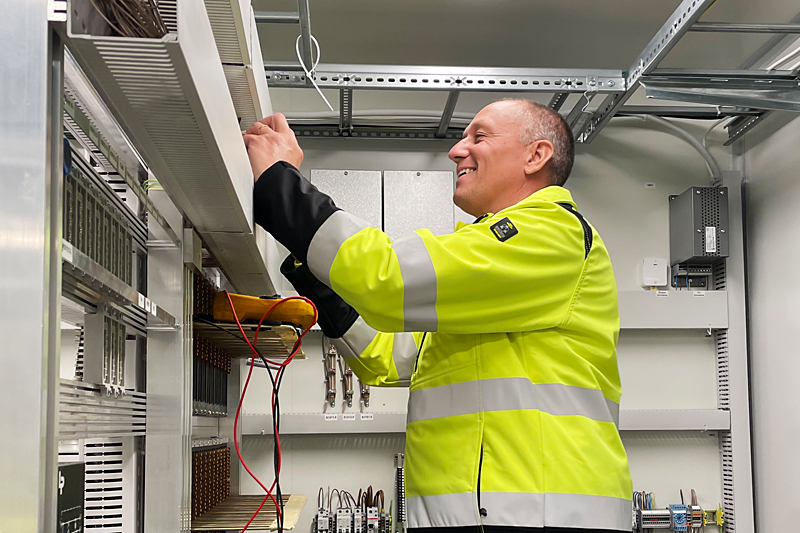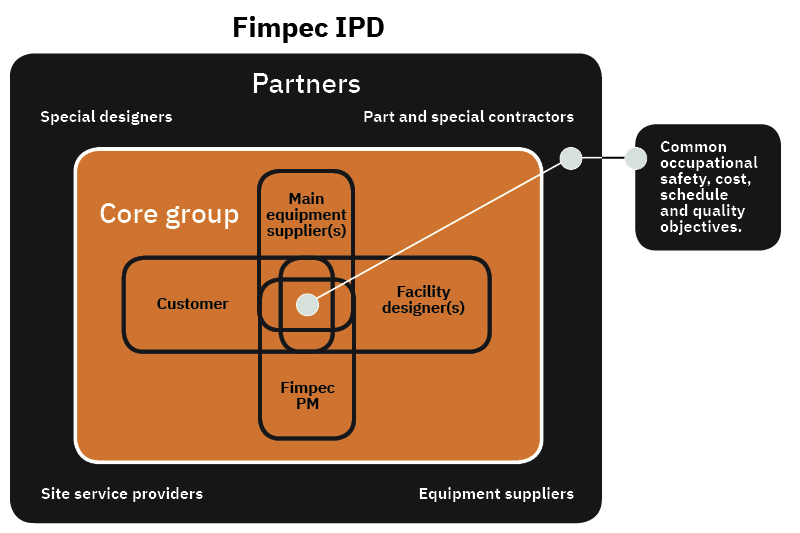Seven ingredients that characterize a successful project

Fimpec’s team leader Dennis Karlsson shares her his sometimes hard-earned seven ingredients in a successful project.
Fimpec’s new and experienced team leader, Dennis Karlsson, works as a technical project manager focused on industry. He arrived there very recently after two years at Afry. It was both the opportunity to be part of a new journey in a smaller organization with some new ideas that attracted coupled with a hefty dose of persuasion. As a Västerås resident, he has worked a lot with various railway projects, most recently sent out to help the Kiruna mine and its ore-transporting railway.
During a long working life with various construction projects, reflections and thoughts, he has created a number of winning concepts to make the project management workflow. Here, he shares his sometimes hard-earned seven ingredients in a successful project.
1. Without the right priorities right from the start, it’s easy to get lost
Many projects fail due to the ambiguity of the contracts that govern the project. The more uncertain or unclear areas and ambiguity of what is to be done, what is included and what is not, the more squeaks in the machinery and the risk of bad energy with all that this entails in the form of delays, poorer quality and general dissatisfaction.
“Communication is always needed here, with clients, subcontractors and employees. The sooner the better. Then we know right away if it is something we interpret in different ways and so we can pass that obstacle in a smooth way. It is important that we are clear and that we have the same view of what needs to be done and what priorities we need to make”, comments Dennis.
Everyone should know their responsibilities and know that they have to speak up immediately if something doesn’t work as intended.
“No euphemisms that can be misinterpreted. You always get that back. If there are problems, we will solve them as soon as possible with the customer.”
2. Team spirit overcomes many obstacles
The whole team should feel that they are involved in the project, and everyone should feel that they are pulling in the same direction. The project managers should regularly leave their desks and go to the place where it happens, be involved and take part in how things are going, if something is chafing or if unexpected problems have arisen. Because problems always pop up.
“When you are out on a construction site, you should have the appropriate clothing so that you can dig in if necessary. Don’t stand on the sidelines in ties and dress shoes, it just creates distance and doesn’t build the team. Because a well-functioning team always completes tasks faster and with higher quality.”
3. Work with what you do best
Sometimes it can be good if the tasks in the team change. It’s just like a football or hockey team where everyone needs to find the task they are best at. In some cases, someone may have little experience of a new task, but with support and trust, it can often be solved. This, of course, requires that the project manager has a presence at the workplace and sees, can help solve and support the group.
4. Project owners and management should take responsibility
The person who leads the project, together with the management, should take responsibility for what happens. No one likes people who shift the blame, least of all the clients. It ruins everything. If someone can’t handle their task, keep up or if something goes wrong, it’s because the project manager and management didn’t take this into account.
It should also be communicated to everyone involved as soon as possible. Everyone can accept that mistakes and problems occur as long as the management takes responsibility and starts to put things right.
5. Everyone needs to know the project model
Clarity with what is expected for everyone in the team until the different dates. Everyone in the project needs to understand what to do. It is extremely important that everyone is involved and pulling in the same direction. Constant contact and communication are the order of the day. So that there is a loyalty to the project.
“Then it also becomes important to have feedback from the group. Of course, in a team, you don’t want someone who constantly complains, but if it occurs, follow up on what is the basis for the whining so that everyone feels that they are being listened to and ask them to suggest changes. Everyone should feel responsible for the solutions, not just the problem formulations.”
6. Understand what’s important to the customer
It is the customer who pays the bills in the end, and it is the customer who must be satisfied. Everyone knows that. But a dialogue with the customer is also needed. So that the client and project manager also have a common understanding of what needs to be done.
“In fact, it happens quite often that you think that a customer is just looking to get a good price because there are a lot of price discussions. But my experience is that it’s often easy to go wrong here. A conversation with the client can often make it clear that quality is a much higher priority than first thought and that the assignment must be carried out in a special way. If something does not fit within the existing contract, it must be communicated as soon as it is discovered. Otherwise, it will be difficult later on. There are also few things that customers appreciate as much as proactive improvement suggestions. It shows responsibility for the project. And that is almost always appreciated.”
7. The goal is the right quality at the right time
In summary, it is important to arrive at the right quality at the right time. Pretty obvious but important to keep in mind.
“Anyone who has been around for a while knows that you always need to take into account the problems and the unexpected events that always occur. Should they not, it’s a pure bonus. I have had many hard-earned experiences that way. That’s why it’s important to have project managers who understand the technology and know where things can go wrong.”
Finally, Dennis wants to emphasize that in addition to the importance of fast and accurate information, it is good to shift the responsibility for the technology to the sub-project managers while the main project manager keeps track of the totality. But what builds the successful projects is a good team pulling in the same direction.
“That’s probably the most important thing I’ve learned in all these years.”


